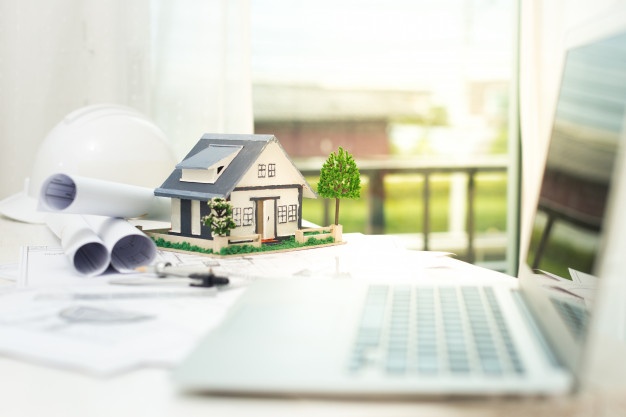Building a home is a long, complex process with a range of forces that can cause delays. While events like unexpected floods are out of anyone’s control, most delays result from individual actions, including the actions of homeowners.
Things the homeowners can do to keep the project on the schedule include sticking to agreed-on deadlines, giving the architect and builder the information they need when they need it, and being thoughtful about changes.
Here’s what you can do to keep you avoid homebuilding delays:
Set Deadlines
Most architects and builders really want to get jobs done promptly, but without firm dates, the schedule can slip. That’s why you want a team that insists on deadlines for everything from meetings to project milestones.
The most important deadline is the last one, and you want to make sure the builder can meet it. Clients should start with the end date and work backwards from there.
Once you have a preliminary design, the builder should be able to give a rough estimate of the timetable for permitting, site work, framing and finishing. If the design makes your move-in date unattainable, then the options are postponing the date or the revising the design.
Look for specificity when having these conversations. “We will be ready to pour the foundation on October 15 and will complete rough framing by December 31” provides more accountability.
Finalize Design Decisions Early To Avoid Homebuilding Delays
Of course, the need to take deadlines seriously applies to you, too. In fact, many builders say that homeowner indecision is the biggest cause of homebuilding delays.
Most builders will tell you the homeowners are an important part of the team when it comes to keeping the schedule. When things get delayed, 99 per cent of the time they did not make decisions by the deadline.
Indecision is most common when making design and product choices. With near-limitless options in countertops, fixtures, tiles, windows and other products some homeowners find it hard to settle on a particular model, style or colour.
The same goes for deciding on plan details. Vague plans can stop a project in its tracks. For instance, if you don’t take time to specify electrical outlet locations you could realize after the home has been framed that they don’t work with your preferred furniture layout.
Hence, the point is that the more thought you put into the plans and specifications, the more likely the project will stay on schedule. Homebuilding delays decisions can stretch the timetable and raise costs—sometimes dramatically.
But agreeing to make timely decisions and actually making them are two different things. Some people have a hard time visualizing how the inside of their home will look, which causes a lot of anxiety.
If you’re one of those people, then the best investment you can make is to hire a good interior designer to help you. Moreover, find a good interior designer that makes the decision-making process considerably smoother.
Participate in Pre-Construction Meetings
With the plans done and the contract signed, it’s time for the pre-construction meeting. This is your chance to confirm product selections and make last-minute corrections before work starts. It’s the equivalent of a pilot’s preflight checklist.
Prep for the meeting by carefully reviewing the plans and specifications, and by showing up with all your questions in hand, no matter how small.
Did you neglect to ask where the floor drain in the garage will be? Ask it now. Do you want to confirm the locations of hose bibs, outdoor lights and attic hatches? Nailing these things down now will reduce the need for changes that could delay the schedule later.
This is also a chance to clarify procedures. Who should you call with questions once construction starts? Can you visit the site during construction? If so, when and what are the rules?
Done well, a good preconstruction meeting eliminates uncertainty and misunderstanding. It goes a long way toward ensuring a trouble-free project.
When building as a couple, it’s best if both of you attend this meeting, even if one will be the primary decision-maker. This will help reduce conflicts and misunderstandings that could stall the job later on.
Be Careful Making Changes
Contractors don’t like to make changes after work begins, and despite what you may have read on the internet, most don’t make extra profit on them.
That’s why smart builders push clients to make decisions early. Changes made late in the design stage can delay the completion of plans and the securing of permits. Changes made after project kickoff can extend build time.
For instance deciding after the home has been framed that you want a bigger window or door could mean reframing the rough opening, as well as a delivery delay while the builder waits for the new model.
The same goes for plumbing fixture changes that require the moving of pipes. If you decide to change things, the builder’s staff has to cancel the order for it. Especially if the items have already shipped, the supplier will likely charge a return or restocking fee.
If the item is special order it may take extra time to get. This can throw things off by a week or more.
Even something as simple as a change in cabinet door style, if made too late, can add weeks to the job if the manufacturer doesn’t have it in stock. The same goes for items like flooring and paint colours.
This is not to discourage legitimate changes—after all, it’s your home. And not all changes cause delays. You need this quantified, however, so a well-organized builder will insist that you sign a written change order that includes the extra time and money it will cost.
The bottom line:
The most important thing homeowners can do to ensure a smooth project is to work with the architect, builder and interior designer to make as many decisions as possible before work starts. Builders obviously prefer this. And because early selections eliminate stress, expense and delays the homeowners who take this advice tend to be glad they did.
Related: Things Every Buyer Needs to Know About A New Construction Home














